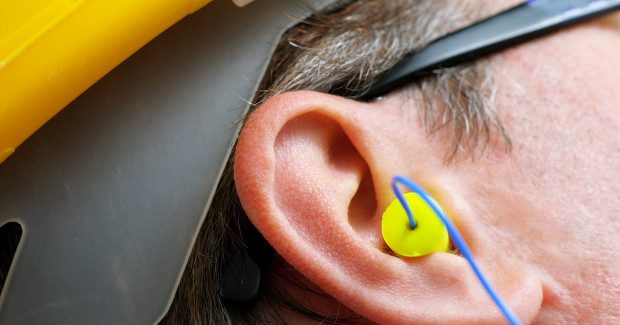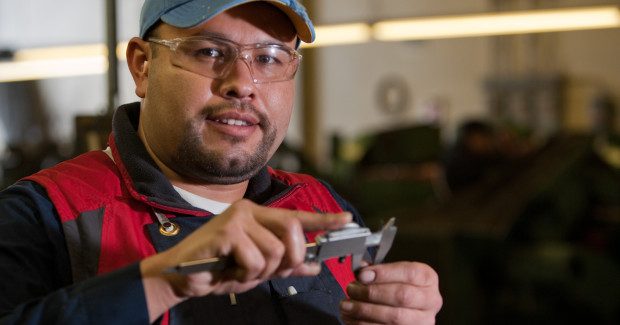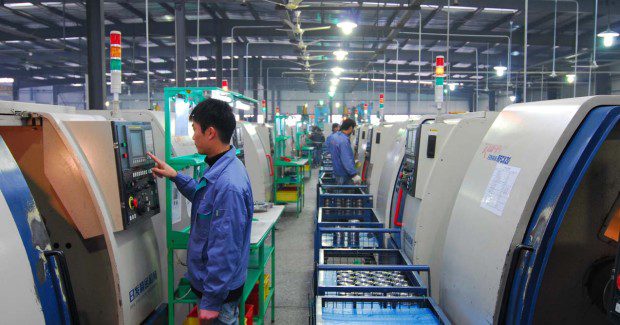Lend Us Your Ears
When mobile workers in lean shops move into and out of noise-hazardous areas, they can’t simply wear maximum protection at all times to block out every hazardous noise. Here are some tips on selecting the right protector for any situation that can solve these problems.
Posted: March 15, 2015
Despite the ongoing industry-wide attention and investment in hearing conservation programs and engineering solutions, extreme noise levels and the potential for noise-induced hearing loss (NIHL) are still being encountered by workers throughout the metal fabrication industry. A properly fitted foam earplug provides a simple solution for the highest level of protection, recommended where exposure to potentially damaging levels of noise may be encountered.
A wide variety of foam earplug shapes and sizes are offered. To learn some tips for achieving the best possible fit of foam earplugs, please click here.
If dirty or gloved hands make use of a roll-down foam earplug difficult, consider a hearing protector with a stem. Even some foam earplugs include a stem for insertion. Multiple-use earplugs often make the best option for intermittent noise levels, or for situations where levels may require raised voices for clear communication. These plugs can be quickly and easily removed or replaced as hazardous noise levels increase or subside. Multiple-use models are usually available in a variety of shapes and sizes to match the variations in users’ ear canals.
https://youtu.be/5nGO0qNTCd8
Ear muffs can be used either alone or with insertable earplugs of some type. In general, the larger the earcup of the muff, the greater the attenuation or lessening of the noise. The rule of thumb for dual protection is to add 5 dB to the attenuation of the earplug for the use of an earmuff in combination. Generally the earplug is the more variable fit.
Where both hearing protection and clear communications are required, modern PPE technology offers two types of solutions. (Both beat the “old school” answer to this situation, wherein workers in a noisy environment just take out their earplugs whenever someone speaks to them. For obvious reasons, this is not a recommended solution.)
A “uniform attenuation” hearing protector provides a basic answer. Unlike traditional plugs, which inherently block more of the high-frequency sounds found in the human voice, this type of protector has filters (electronic or nonelectronic) to lessen the amount of noise that reaches the ear, but do so fairly equally across all frequencies. A uniform attenuation protector thus lets through more high-frequency voice sounds, so that speech may be more easily understood.
https://youtu.be/g4lu0aAS968
For the most technologically sophisticated solution, consider a communication system. This advanced device incorporates hearing protection, active noise reduction, and voice signal amplification. It’s recommended where clear communication is critical, as in workplaces where misunderstanding a verbal communication could cause an injury or even a fatality.
In lean manufacturing, as more workers become mobile and move between or into and out of noise-hazardous areas, challenges with mobile workers present unknown exposure levels, uncertain availability of protection equipment, and difficulty in monitoring PPE use. PPE should be readily available at each worksite, everywhere that it is needed. Workers should know when and how to use their hearing protection. A good rule of thumb is that if you have to shout to speak to someone approximately an arm’s length away, you should both have hearing protection on.
Earplugs can be stored in pockets, and reusable styles of earplugs come with a case to keep them clean as well as handy. Belt clips can be used with many earmuffs, and folding earmuffs can be stored in an optional belt case. Workers must use the engineering controls that are available. Noise reduction can sometimes be as easy as closing the cab doors on heavy equipment.
The metalworking industry presents a stunning variety of hearing hazards, as punching, cutting, casting, stamping and forming machinery, equipment and tools of all varieties assault the ears with all sorts of constant, intermittent, and impact noise. In such a dynamic environment, with people and machines constantly on the move, it’s critical that workers maintain situational awareness to operate safely. However, they can’t simply wear maximum protection at all times to block out every hazardous noise. Such overprotection could too easily make them miss important voice communications or warning signals.
Nor can they periodically remove their hearing protectors to monitor machines or speak with colleagues. That’s a sure way to risk permanent, noise-induced hearing loss.
HAZARDOUS TOXINS
Science has determined that certain chemicals found on the work site, including benzene, toluene, and xylene, are ototoxic. Literally ear poisons, they may pass through the skin or be inhaled as vapors, and produce damage to hair cells in the ear similar to that caused by harmful noise exposure. Even more troubling, the combined impact of both noise and chemicals is synergistic. Taken together, they may do much more damage than exposure to either hazard alone. Fortunately, modern PPE offers effective solutions.
Protective clothing and respirators in high-chemical-exposure areas can guard against ototoxin effects. Proper fit-testing for earplugs has proved perhaps the most important single step in helping workers choose the correct level of hearing protection for their worksites. And systems that integrate hearing protection with communication features can ensure clear communications in dangerous and changing environments: allowing situational awareness plus improved radio and face-to-face communication while protecting hearing.
HEARING CONSERVATION
Whether a formal hearing conservation program is required or not, the goal is to have a safe work environment at all work locations. Workers should go home with the same level of health and wellness the brought to work. Using the right hearing protection maintains a worker’s hearing health, but also allows that worker to safely complete his or her job.
Regulations require that employers furnish adequate hearing protection on the job. Finding the right hearing safeguards for the myriad needs at worksites across the metalworking industry not only provides compliance: it ensures that workers remain protected and productive.
Honeywell Safety Products USA, 900 Douglas Pike, Smithfield, RI 02917, 800-430-5490, informationsp@honeywell.com, www.honeywellsafety.com.













